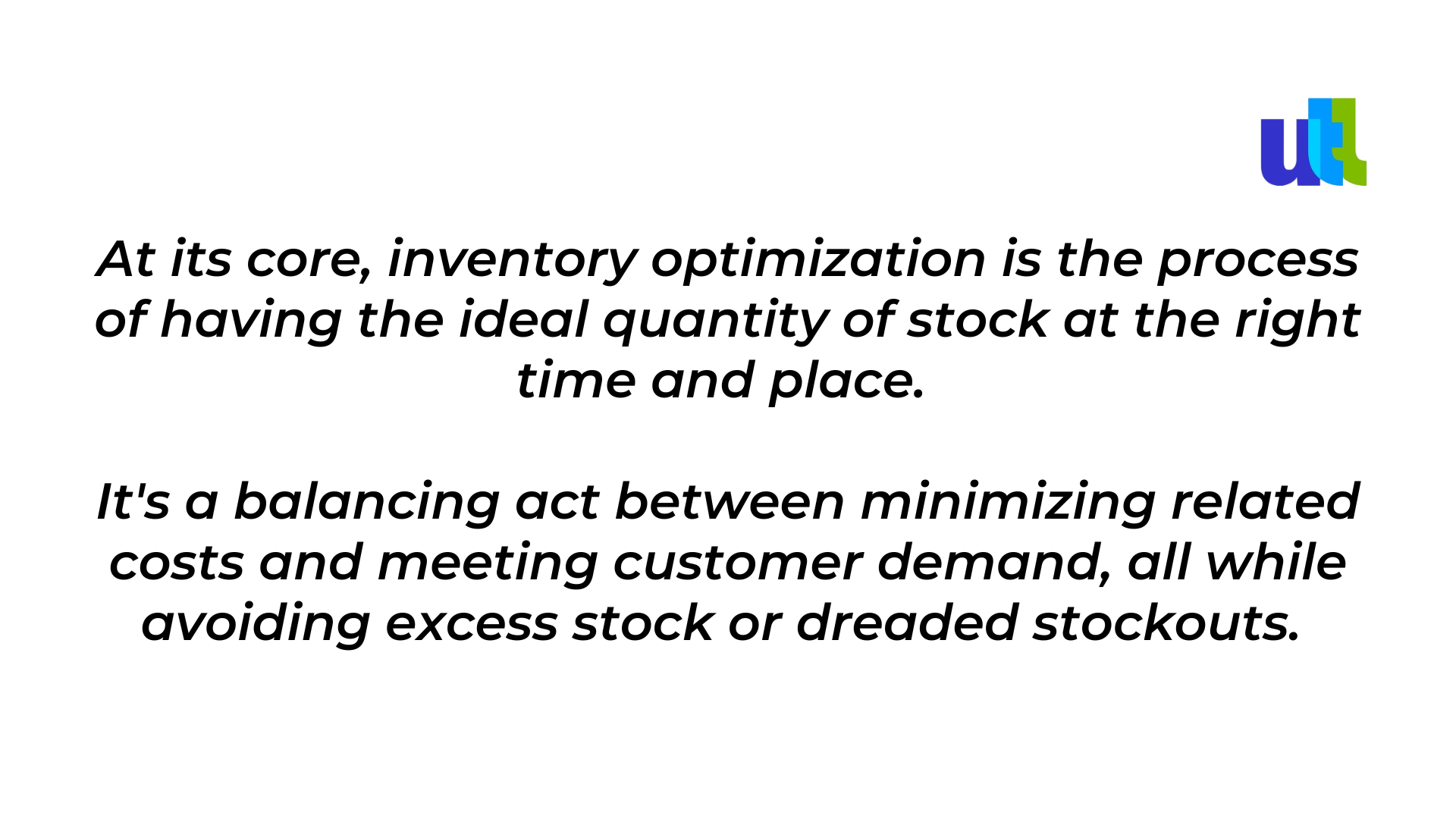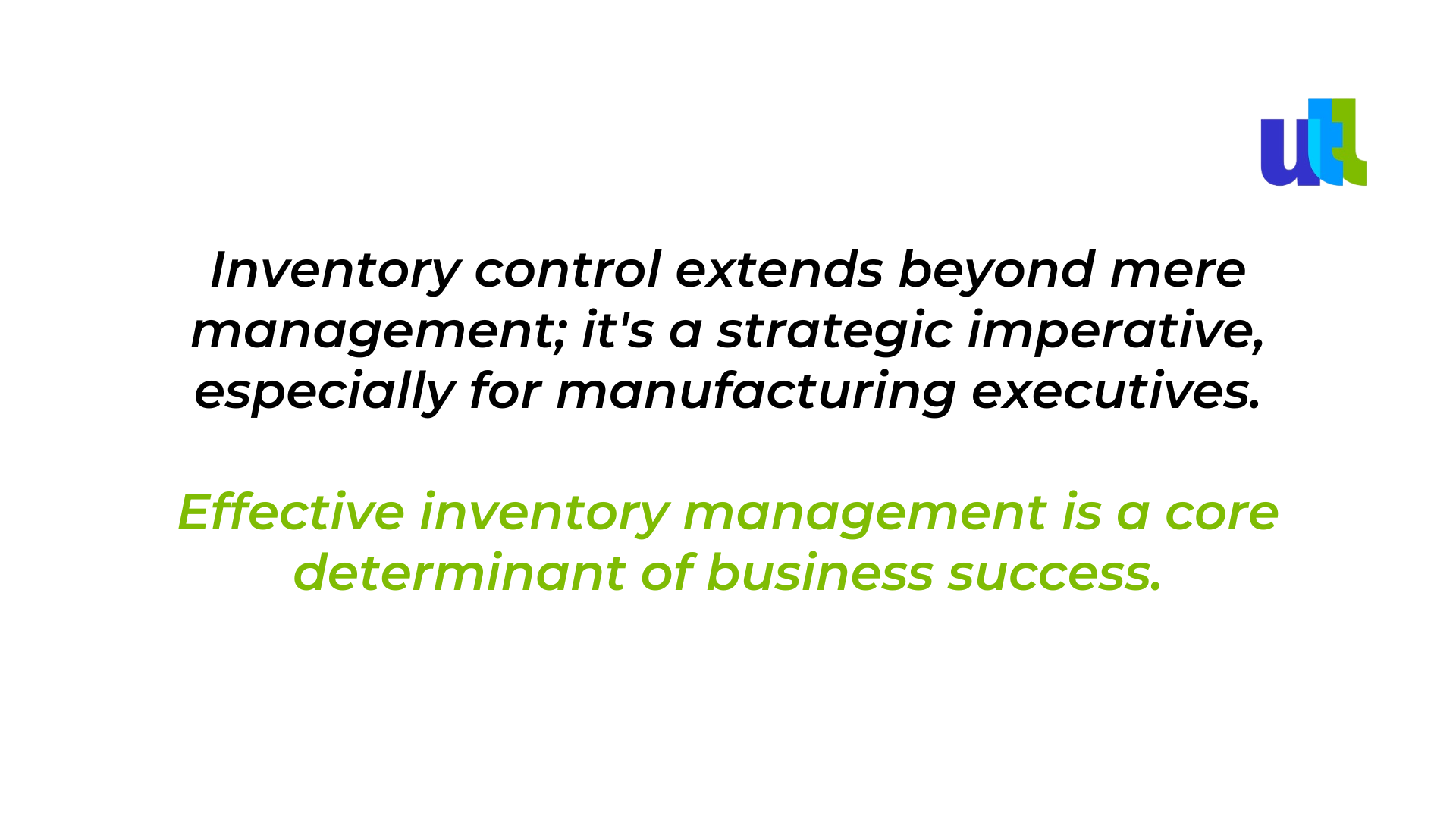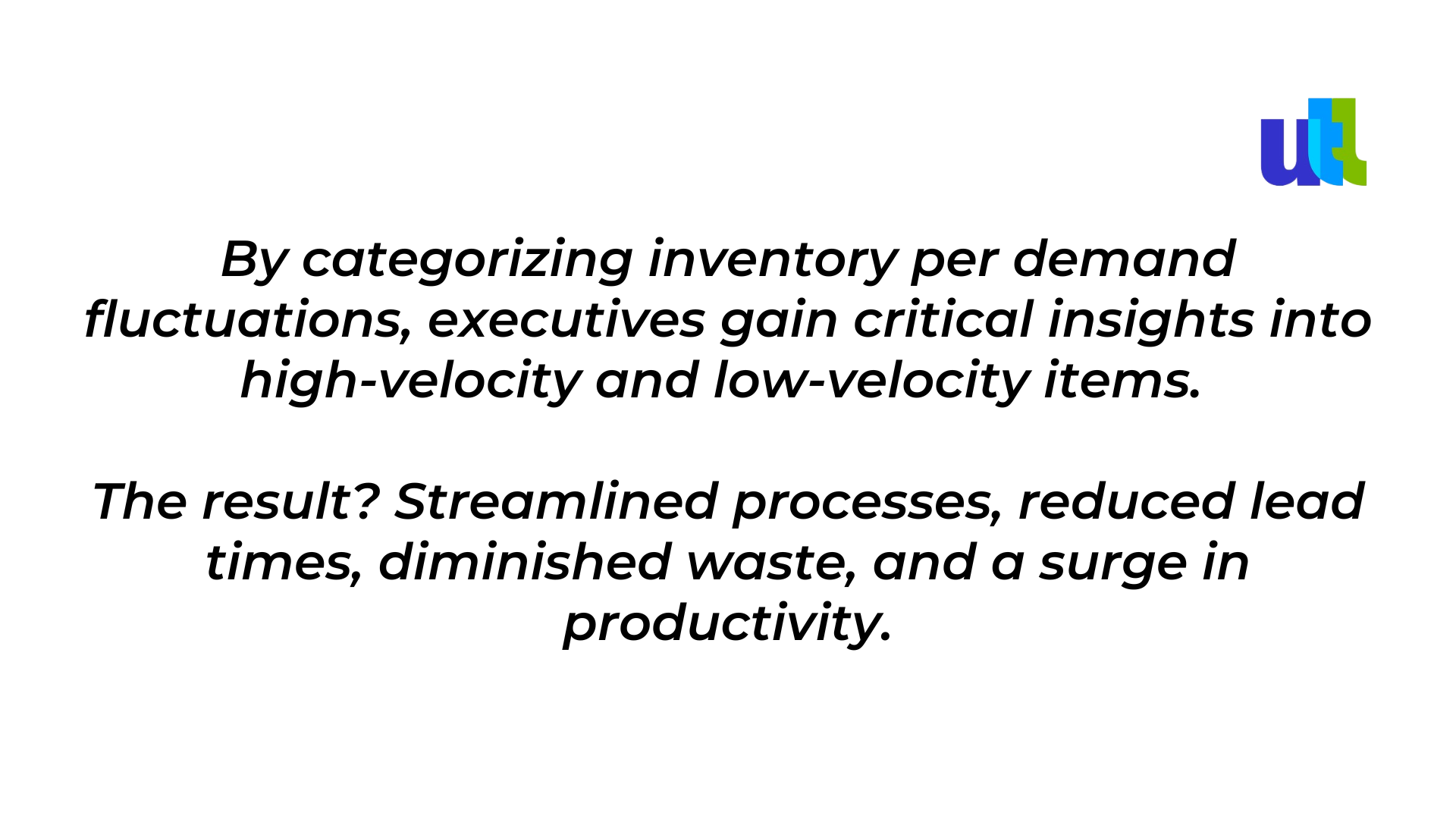Insights into inventory management systems for optimal inventory control.
In today's fast-paced market, efficient inventory management is pivotal to sustaining a competitive edge. It's not just about having adequate products in stock but also ensuring these levels aren't tipping the scale and eating into your profits. In this blog post, we delve into optimizing inventory levels, not just to reduce carrying costs but also to avoid stockouts, thereby striking a balance between demand satisfaction and cost-effectiveness.
Unpacking Inventory Optimization

By leveraging tools, technologies, and processes for real-time tracking and demand forecasting, businesses can adeptly navigate the logistical challenges of inventory storage and management.
Core Components of Inventory Optimization
Every business aiming for effective inventory management must consider several factors: storage space, existing inventory, supplier lead times, seasonal fluctuations, and promotional drives. Let’s unpack the essentials:
1. Demand Forecasting: Employing past sales data, demand forecasting predicts future product needs, guiding informed supply decisions and anticipating sales and revenue. While absolute accuracy is unattainable, it's a critical strategy in minimizing stockouts, enhancing customer satisfaction, and honing inventory levels.
2. Inventory Replenishment: This entails restocking shelves from storage or receiving fresh stock from suppliers. Timely replenishment ensures orders are ready for processing, preventing backorders or delays.
3. Balanced Inventory Levels: Overstocking binds capital and inflates storage costs, while understocking misses sales and frustrates customers. Optimal inventory levels mitigate these risks, enhancing cash flow, efficiency, and customer trust.
4. Strategic Inventory Storage: Effective inventory storage satisfies customer expectations and accommodates business growth. Tailoring your storage strategy to your business model, product characteristics, and sales volume is crucial for operational efficiency.
5. Reorder Point Formula: Determine the ideal reorder moments with a simple yet effective formula: Reorder Point = Demand during lead time + Safety Stock. This approach avoids excess capital investment in stock while considering various lead times.
In conclusion, by harnessing cutting-edge strategies and technologies, businesses can maintain the perfect equilibrium between supply and demand, driving growth, profitability, and customer satisfaction in the long run. Remember, in the realm of inventory, balance isn't just beneficial—it's the backbone of business success.
The Imperative of Inventory Control in Manufacturing

Financial Implications of Inventory Control
Inventory isn't just physical items—it represents a substantial financial investment. In the realm of manufacturing, resources tied up in unsold goods are resources that aren't driving growth elsewhere. Inefficient management heightens carrying costs, accelerates obsolescence, and contributes to unnecessary wastage. However, with astute control measures, leaders can curtail surplus inventory, bolster cash flow, and liberate capital for pivotal business initiatives.
The Customer Satisfaction Key
In the heartbeat of customer demand, inventory control maintains the rhythm. Accurate demand forecasting and inventory optimization are the lifelines in preventing stockouts and backorders, culminating in enhanced customer satisfaction and loyalty. This precision not only stimulates repeat purchases but also causes positive referrals, fueling a cycle of sustainable business growth.
Operational Efficiency and Inventory Classification
Inventory control is synonymous with heightened operational adeptness.

Sustainability and Inventory Management
In today's eco-conscious world, inventory control resonates with sustainable business practices. By cutting excess inventory and fine-tuning supply chain mechanisms, companies can notably lessen their environmental footprint. This strategic move goes beyond reducing waste; it curtails energy use and trims carbon emissions innate to production and warehousing operations.
In essence, inventory control is a multifaceted powerhouse for manufacturing executives. Its tentacles reach into the financial health, customer satisfaction, operational agility, and ecological responsibility of an organization. By embracing sophisticated inventory control systems, leaders are not just responding to the present—they're sculpting a path of resilient, sustainable growth. In the high-stakes arena of modern business, mastering inventory isn't an option; it's a necessity that manufactures success.
For manufacturing executives, inventory control isn't just an operational necessity; it's a strategic lever of success, driving resource optimization, cost reduction, and heightened customer satisfaction. It's through this lens that manufacturing executives will unearth valuable insights for achieving the zenith of inventory control, informing decisions, refining operations, and steering their organizations toward sustainable growth.
Case Studies and Best Practices
Real-world applications often speak louder than theoretical principles. In this section, we spotlight several industry giants who have redefined their operational landscapes through masterful inventory control.
- Toyota: Their pioneering just-in-time (JIT) system stands as a testament to the power of synchronized production and demand, minimizing excess while maximizing savings and efficiency.
- Amazon: Their command of inventory control is unmatched, thanks to cutting-edge data analytics and forecasting. With inventory strategically strewn across fulfillment centers, they guarantee rapid, reliable delivery, minimizing surplus.
- Dell: Their build-to-order approach is a game-changer, drastically cutting inventory costs and aligning production tightly with demand, leading to unparalleled efficiency and customer satisfaction.
These trailblazers serve as both inspiration and blueprint for manufacturing firms aiming to harness the full potential of optimized inventory control in their relentless pursuit of sustainable growth.
Inventory optimization is not a one-size-fits-all process. It requires a deep understanding of your business model, customer demand, and the market landscape. By integrating advanced strategies, technological solutions, and learning from industry leaders, businesses can strike the perfect balance between supply and demand. This balance is not just a component of operational efficiency; it's a cornerstone of sustained growth, profitability, and customer satisfaction in the complex world of commerce. Remember, in the inventory arena, achieving the right balance isn't just desirable; it's the backbone of thriving in the business world.
For free consultation on optimizing inventory, click here.
----------------------------------------------------------------------------------------------
View the full presentation:
WRITTEN BY
Milda Butkeviciute
2023-10-19


































































































































































































